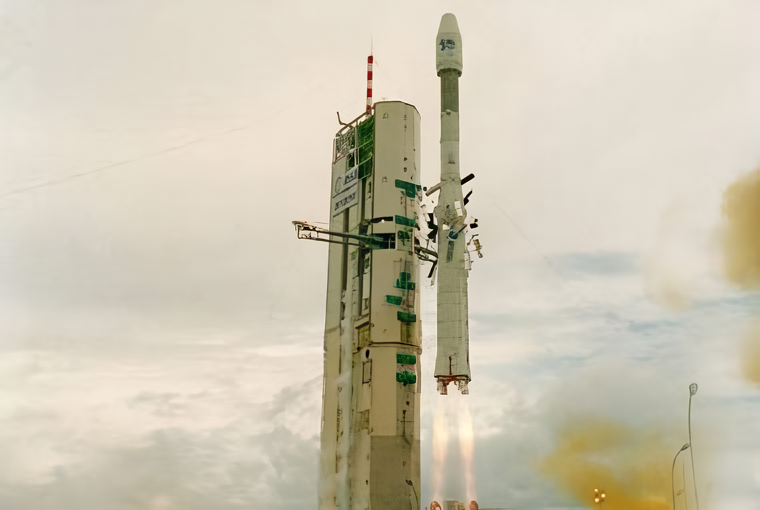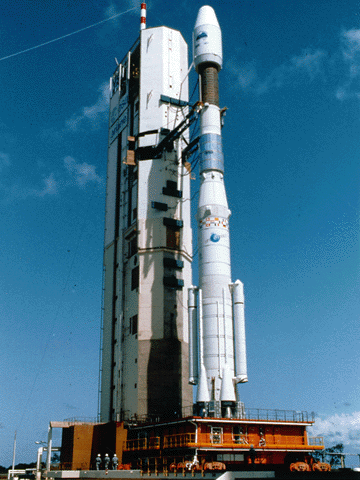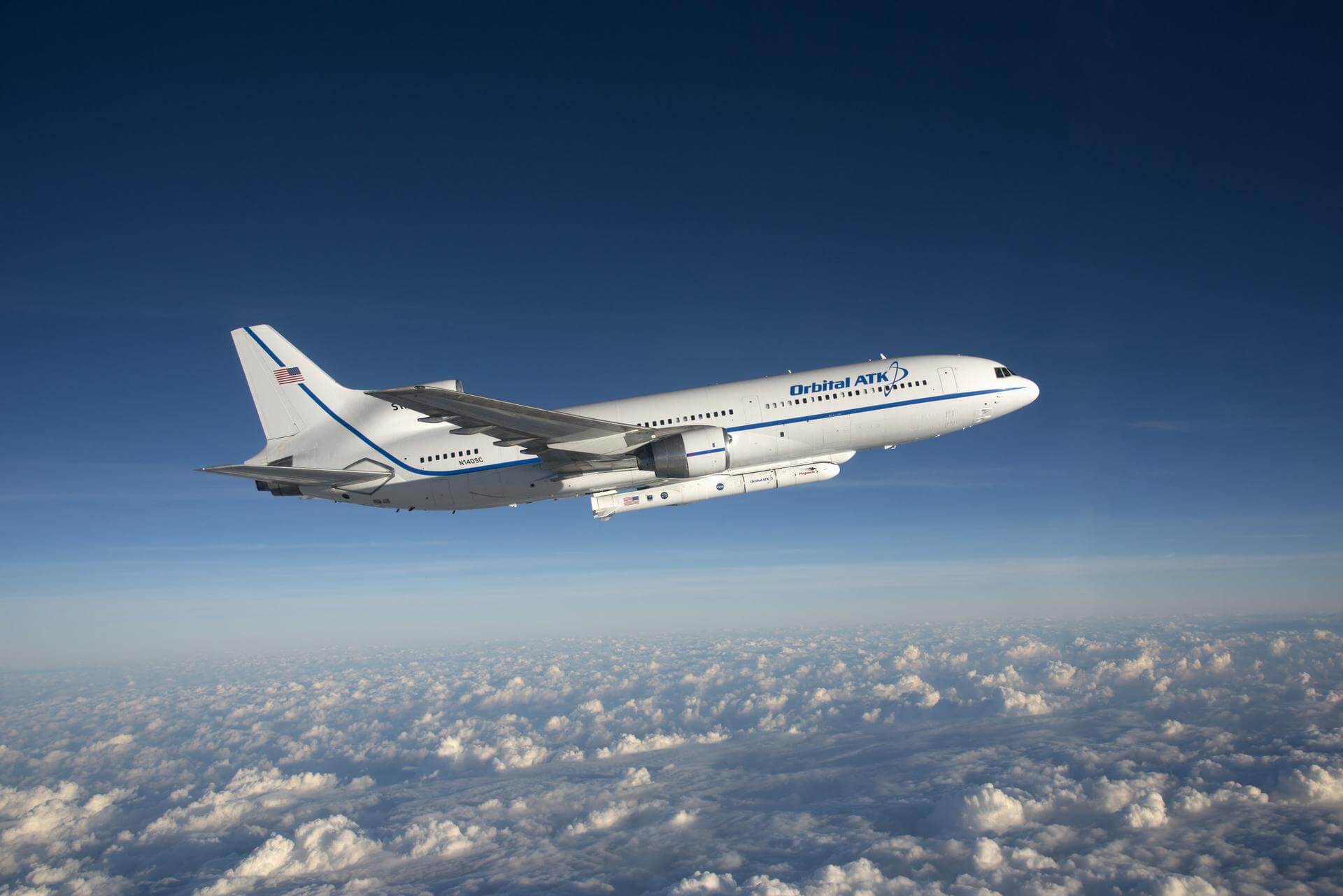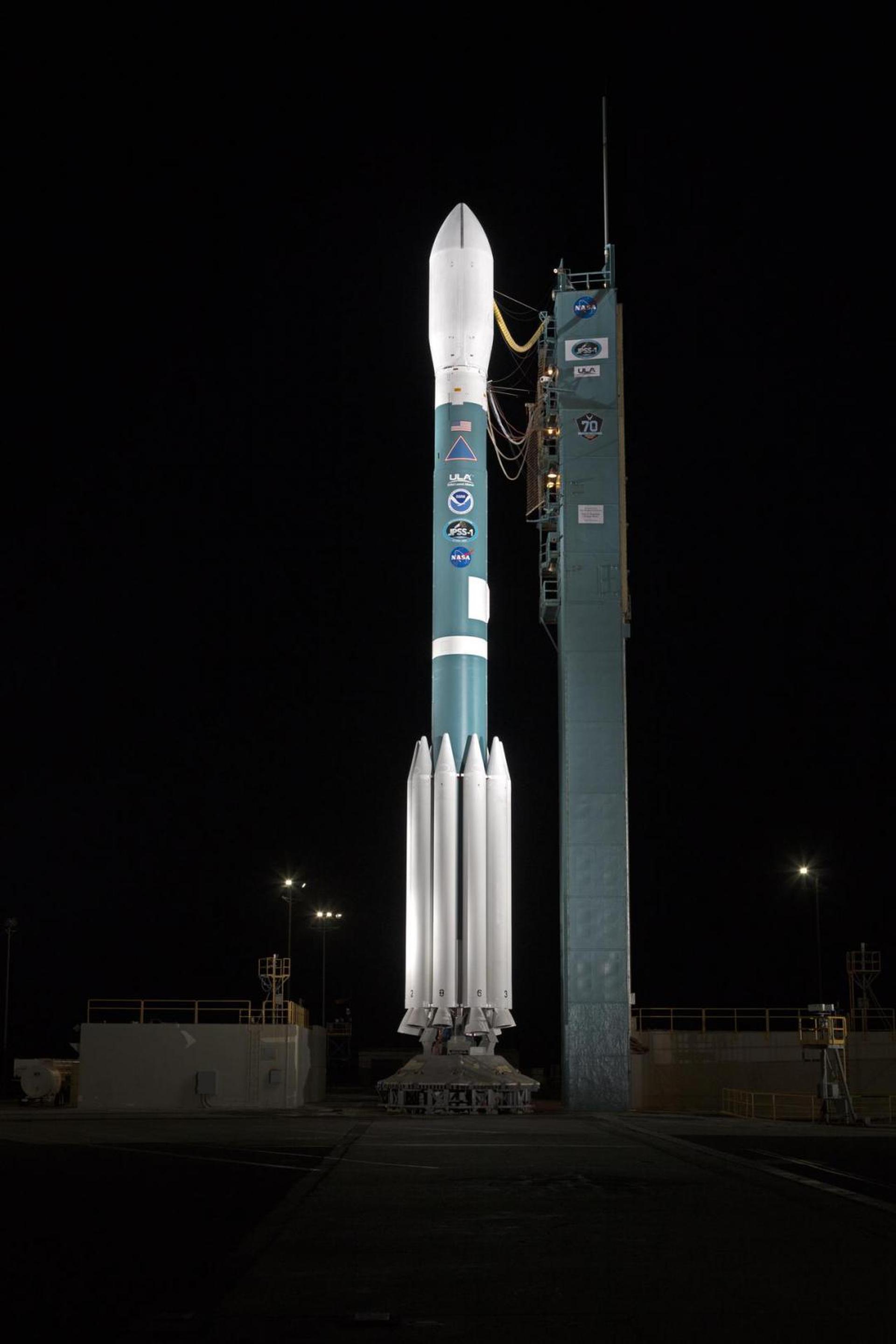Previous Spaceflight Launches
Filter by Agency, Locations or Vehicles
Show All LaunchesAriane 40 | SPOT-4
Aérospatiale | FranceGuiana Space Centre, French Guiana
March 24, 1998, 1:46 a.m.
Atlas II | UHF F/O F8
Lockheed Martin | United States of AmericaCape Canaveral, FL, USA
March 16, 1998, 9:32 p.m.
Status: Launch Successful
Mission:
The U.S. Navy began replacing and upgrading its ultra-high frequency (UHF) satellite communications network during the 1990s with a constellation of customized satellites built by Hughes Space and Communications Company. Known as the UFO (Ultra High Frequency Follow On) series, these HS-601 model satellites support the Navy's global communications network, serving ships at sea and a variety of other U.S. military fixed and mobile terminals.
Geostationary OrbitSoyuz U | Progress M-38
Russian Federal Space Agency (ROSCOSMOS) | RussiaBaikonur Cosmodrome, Republic of Kazakhstan
March 14, 1998, 10:45 p.m.
Atlas IIAS | INTELSAT 806
Lockheed Martin | United States of AmericaCape Canaveral, FL, USA
Feb. 28, 1998, 12:21 a.m.
Status: Launch Successful
Mission:
The Intelsat VIII-VIII/A series has been designed to meet the needs of Intelsat users throughout the system for improved C-band coverage and service. These spacecraft will incorporate six-fold C-band frequency reuse, two-fold frequency reuse of expanded C-band capacity, and the highest C-band power level ever for an Intelsat satellite. Consequently, Intelsat VIII will provide significantly more C-band capacity for public switched telephony and Intelsat Business Service, better quality for video services, and encourage new international VSAT applications.
Geostationary OrbitAriane 42P | Hot Bird 4
Aérospatiale | FranceGuiana Space Centre, French Guiana
Feb. 27, 1998, 10:38 p.m.
Pegasus XL | Broadband Advanced Technologies Satellite (BATSAT/Teledesic T1) & Student Nitric Oxide Explorer (SNOE)
Orbital Sciences Corporation | United States of AmericaAir launch to orbit
Feb. 26, 1998, 7:07 a.m.
H-II | Kakehashi
Mitsubishi Heavy Industries | JapanTanegashima Space Center, Japan
Feb. 21, 1998, 7:55 a.m.
Delta II | Iridium 50, 52, 53, 54, 56
United Launch Alliance | United States of AmericaVandenberg SFB, CA, USA
Feb. 18, 1998, 1:58 p.m.
Status: Launch Successful
Mission:
Iridium provides global mobile telecommunications services using a constellation of 66 low earth orbit satellites in a 86.4° inclined orbit. Although 77 satellites were originally envisioned for the system and spawned the name based on the 77th element in the periodic table, the system has been scaled back. Motorola's Satellite Communications Group designed and manufactured the Iridium satellites with Lockheed Martin providing the LM-700A spacecraft buses.
Low Earth OrbitSoyuz-U-PVB | Yantar-1KFT 19
Progress Rocket Space Center | RussiaBaikonur Cosmodrome, Republic of Kazakhstan
Feb. 17, 1998, 10:35 a.m.
Delta 7420-10C | Globalstar 1 to 4
McDonnell Douglas | United States of AmericaCape Canaveral, FL, USA
Feb. 14, 1998, 2:34 p.m.
Status: Launch Successful
Mission:
The Globalstar global mobile communications network offers global, digital real time voice, data and fax via a constellation of 48 minisatellites. The constellation operates in a 1410 km orbit inclined at 52 degrees, and will also have 8 spares. The satellites were built by Space Systems Loral and Alenia Aerospazio in Rome, Italy.
Low Earth Orbit






